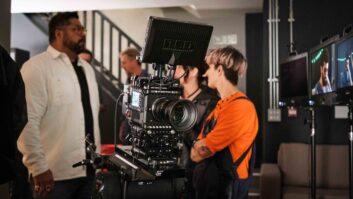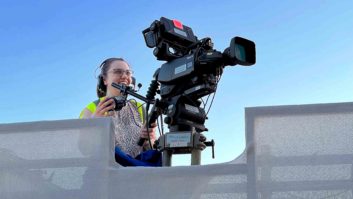
The challenge for broadcasters and vendors is that IP technology is not as simple as SDI, says Axel Kern, senior product manager, L-S-B Broadcast Technologies
Talking about the challenges the broadcast industry is facing now and in the future, there appears to be two major trends, which are mutually dependent. On the one hand, there is a continual strong demand to streamline production workflows and increase efficiency in order to save time and money.
On the other hand, the transition process from baseband to IP infrastructures in broadcast environments is rapidly gaining momentum; driven by a need to protect capital investments in futureproof technology as traditional baseband infrastructure is no longer suited for transport of higher resolution video standards. IP technology enables broadcasters to be ready for 4K, 8K or whatever will be further ahead down the road.
The demand for video content is rapidly increasing with more and more vehicles to view material. Audiences have an ever-growing thirst for more interesting and interactive viewing possibilities. This brings additional revenue opportunities for broadcasters but with the new challenge of having to create vast amounts of new video content to keep viewers attracted.
Maximising the flexibility of production resources is a key topic to allow fast turnaround of content generation. This could mean utilising facility resources to produce live remote productions directly or to quickly change a free production resource to any job function or task. Time, simplicity and speed are key drivers in the development of modern tools that broadcasters are demanding from industry vendors.
The challenge for both broadcasters and vendors alike is that IP technology is not as transparent or as simple as traditional SDI technologies. For example, a cable transporting IP video no longer represents the signal quantity or format.
Hardware technology is changing fast but operational production workflows are not. What is paramount is that whatever the infrastructure is behind, it is essential to provide the users with familiar interfaces and controls that allow them to continue to work in the workflows to which they are accustomed.
The underlying philosophy of L-S-B is to allow broadcasters to constantly maintain legacy investments but migrate to fast-changing hardware technologies and infrastructure without changing the production workflows, tools and interfaces for operators. The bigger picture control aspect of broadcast facilities is often overlooked but it is L-S-B’s view that this is becoming more and more important.
A unified control layer that maintains familiar and simplified operation independent from the technology choices behind is key to protecting investments. Even though right now the broadcast industry is hesitating whilst video IP technology matures, L-S-B’s goal is to provide the industry with tools to be prepared for any future changes.
In conclusion, the broadcast industry is facing an even stronger need for increased efficiencies in operation and increased flexibility of available resources. IP technology is one game-changer in this development.
Although IP is already in use in distribution and remote production, we just see the beginning of this paradigm shift. The task now is to convert the contribution side and existing infrastructure in studios or broadcast facilities to IP. We are happy to help in this transition process and to provide the tools to work seamlessly in all broadcast environments and across all infrastructures – baseband or IP.







